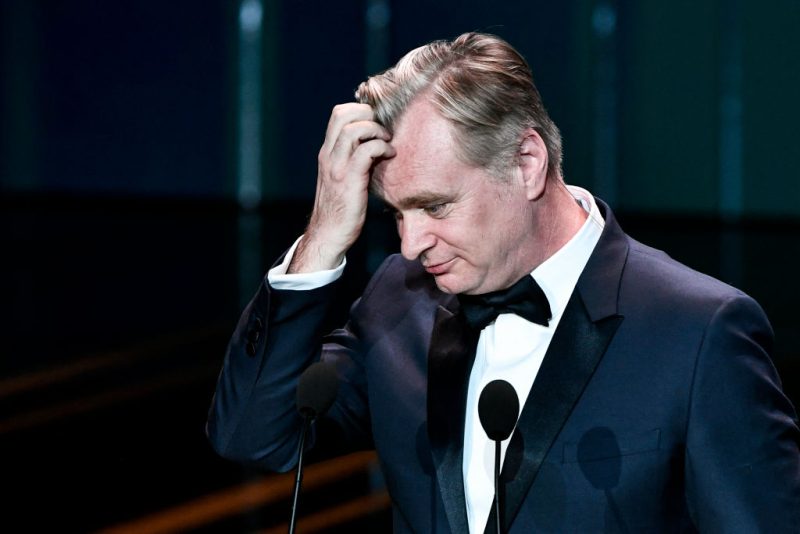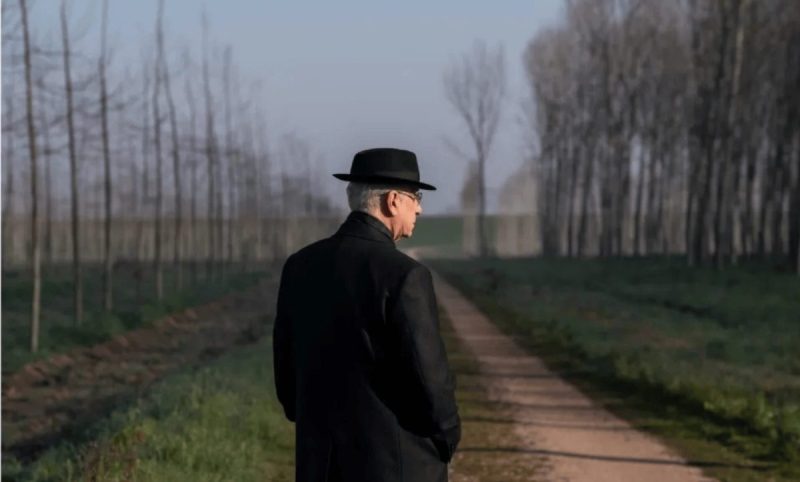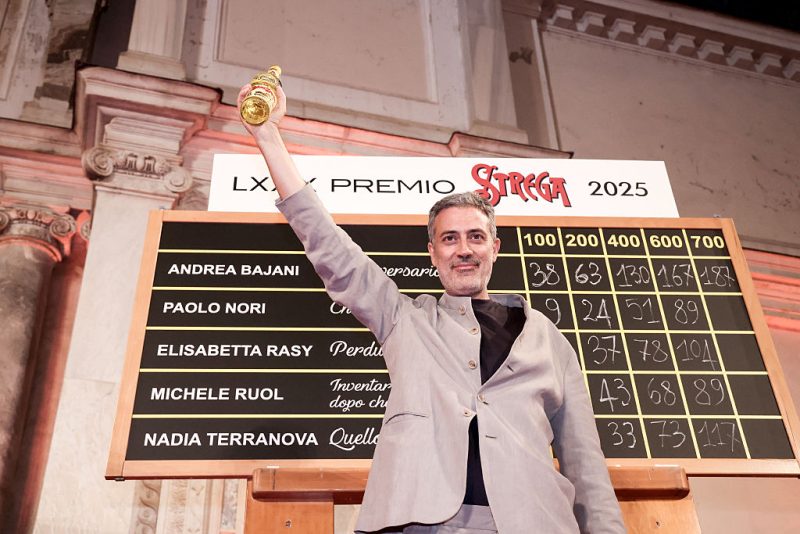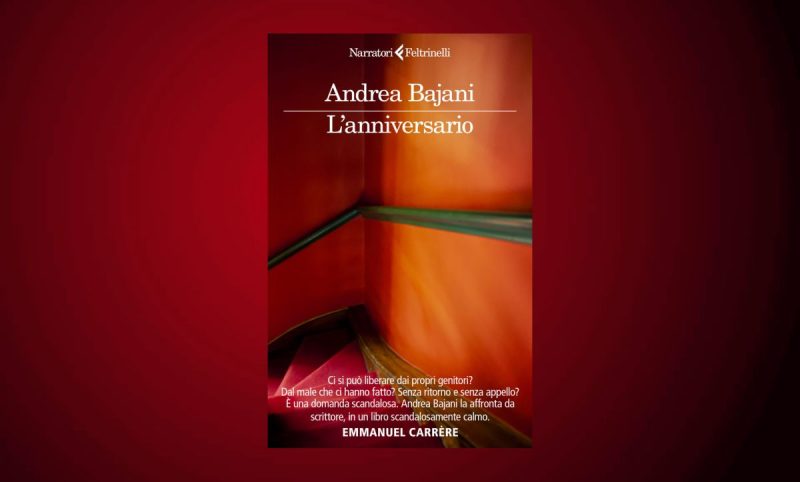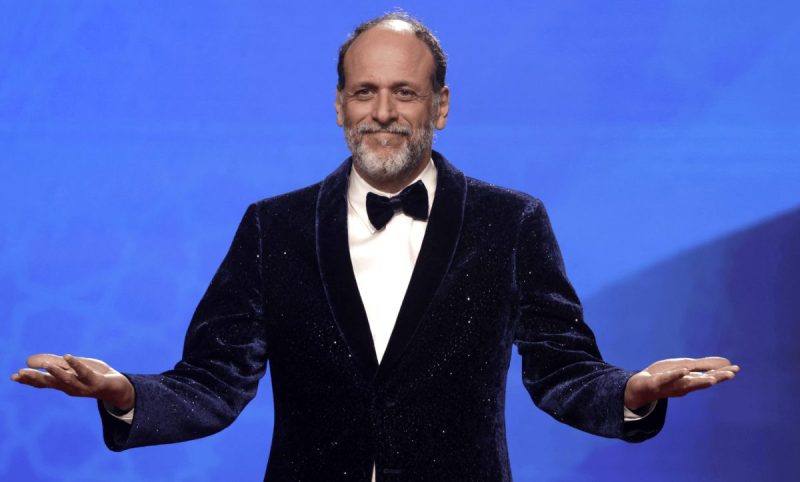Nel primo teaser del film Tom Holland e gli altri attori utilizzano una marcata cadenza americana, particolare che ha indispettito molti fan.
Al Cairo con Ziad Zaza, la voce della trap egiziana
Dal numero in edicola dedicato ai confini, il racconto di una giornata tra le strade della capitale con l’artista più interessante della scena drill del suo Paese.
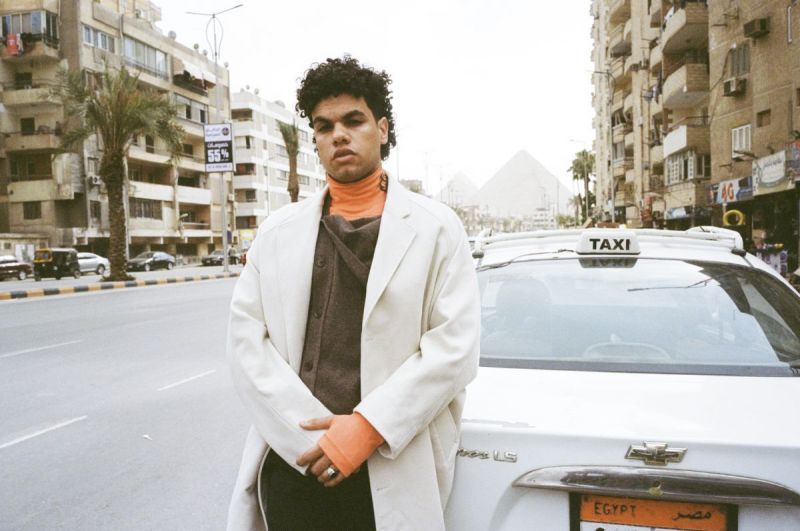
Fuori dall’aeroporto la luce del cielo è bianca, quasi gialla, come se stesse per nevicare, ma i gradi percepiti sono più di trenta. Per raggiungere la sede dell’etichetta discografica, Beatroot Records, a Giza, attraversiamo tutta la città. Appena partiamo, l’autista, Yussef, mette la musica al massimo: nel corso del viaggio cerchiamo diverse canzoni su Shazam, ansiosi di poterle riascoltare una volta tornati a Milano, ma internet funziona poco, e l’unica che riusciamo a trovare è di Hoda Bondok, popstar e attore (in Egitto se diventi famoso con la musica poi diventi anche attore, ci spiegano) da 1 milione di follower su Instagram, “Kan Lya Habayeb”. In più di un’ora di viaggio, la città si trasforma tante volte: prima i palazzi signorili, poi gli stradoni che si sovrappongono, poi la città vecchia con le case basse e le moschee dai tetti azzurri, i casermoni mezzi distrutti color terra di cui si vedono ancora i colori usati per dipingere gli interni, rosa, verde acqua, celeste, poi il deserto, poi una giungla di palme, poi i centri commerciali, le piramidi tra ombre grigie in lontananza che sembrano astronavi. Per raggiungere Giza bisogna oltrepassare il Nilo, si dice che facendolo si entri nell’aldilà, ci spiegano i ragazzi dell’etichetta discografica (Omar Gawdat, co-fondatore e Ceo di Beatroot Records e Omar Safi, co-fondatore e Ceo della casa di produzione Cinerama; Nalan Al Sarraj, Head of Talent Management) spiegandoci che molti trentenni si sono rifugiati da questa parte della città per sfuggire al caos del Cairo. A Giza ci sono dei compound in cui possono entrare soltanto i residenti, così nuovi e tranquilli che sembrano dei villaggi vacanze, non dei quartieri abitati. Moltissimi edifici sono ancora vuoti, la sera le luci accese nelle case sono pochissime. Anche il nostro albergo è nuovo, pieno di quadri bruttissimi, nei corridoi ne contiamo almeno tre con le gondole e Venezia.
La sera i ragazzi dell’etichetta discografica ci portano a cena fuori. Per l’occasione Yussef sceglie una colonna sonora diversa: a quanto pare il pop e la musica tradizionale (festosa, psichedelica o struggente) sono riservate ai viaggi di giorno, quando diventa buio si passa alla trap. Tra le canzoni riconosciamo subito quelle di Ziad Zaza, il protagonista delle nostre fotografie. Sono le più aggressive e anche le più originali, le più riconoscibili, per quel suo modo di cantare rabbioso, strascicato, teatrale – «quasi da ubriaco», si legge in una recensione online – e per la produzione, una base drill semplice, minimale, e per questo ancora più potente, con sample che ricordano la musica dei programmi televisivi arabi degli anni Novanta, un dettaglio che aggiunge un sapore nostalgico.
Al ristorante, Omar si vanta del suo pupillo come un padre orgoglioso. Ma non è il suo unico fan: in un articolo pubblicato su Scene Noise, “How Drill Is Taking Over Egypt’s Rap Scene”, lautore conclude la sua lista di trapper con un link a “Eznab” di Ziad Zaza, dal suo album del 2022 El Rays, e scrive «Si può sostenere che la musica prodotta all’interno di questo sottogenere sia, a volte, derivativa, quando gli elementi chiave sono usati in senso stereotipato o copia e incolla. Tuttavia, alcuni artisti hanno aggiunto una svolta originale, sfidando gli elementi sonori tipicamente associati alla drill, come Ziad Zaza in El Rays, dove la strumentazione mostra un uso più sperimentale del sample. L’album è stato prodotto da diversi collaboratori, tra cui 15, Lil Zoz, Moharram, Mahmoud El Sammad e Ismail Nosrat».
Ziad ha ventitré anni appena compiuti, su Instagram ha 100 mila follower e 47 mila su TikTok. È cresciuto a El Fayoum, a 100 chilometri dal Cairo, e si è trasferito in città da qualche anno. Dopo l’album ha lanciato un pezzo che ha generato una specie di culto, “Basha”, un termine che, ci spiegano, è un po’ l’equivalente del nostro “capo” o “boss” o “bomber”, un tempo veniva utilizzato per esprimere rispetto e riverenza, adesso si usa ironicamente, nella vita di strada. Basta confrontare il video di “Basha” (diretto da Mohsen ElSherif) a quelli dei colleghi su YouTube per capire che è qualcosa di veramente nuovo nella scena del Cairo, un’estetica inesplorata, meno street e più moda. Per capire di cosa parla ci affidiamo al video, in cui un casting di personaggi davvero notevole sembra complottare qualcosa, perché tradurre le canzoni di Zaza con Google Traduttore è impossibile, per via dello slang. Ziad mi spiega che la canzone parla di fare «lo snitch» (il traditore, la spia), non solo in strada ma anche nei rapporti d’amore o d’amicizia. Per i suoi look, notevoli almeno quanto il casting, bisogna ringraziare dei designer egiziani, Ahmed G e Kojak. Mi spiega che la location del video sono i nuovi edifici realizzati dal governo per l’area di Nazlet El Semman, una ricostruzione che ha costretto i residenti a cambiare abitazione, «anche se il quartiere sembra nuovo e ordinato, loro non sono contenti e non è la loro casa».
Dal vivo Ziad non ha nulla dell’atteggiamento da star, al tempo stesso superbo e scazzato, che ostenta nei video. È educatissimo, sorridente, paziente, guarda video su TikTok e YouTube mentre lo scarrozziamo in giro per la città su un bus pieno di vestiti Dior. Glieli proviamo addosso nella sede della Beatroot Records, li indossa come se fossero suoi e quando gli scattiamo le prime foto restiamo sorpresi dalla sicurezza con cui posa: un atteggiamento che conferma la passione per la moda che trapela dal video di “Basha”. «La moda è un altro strumento che mi piace per esprimere chi sono e come mi sento», mi spiega, «sono appassionato di moda da quando ero un ragazzino, mi piace sempre seguire le novità, cosa fanno i brand e le loro sfilate. Ma alla fine non si tratta tanto del nome del marchio per me, si tratta di quanto mi sta aiutando a esprimere e sentirmi me stesso in quel momento».
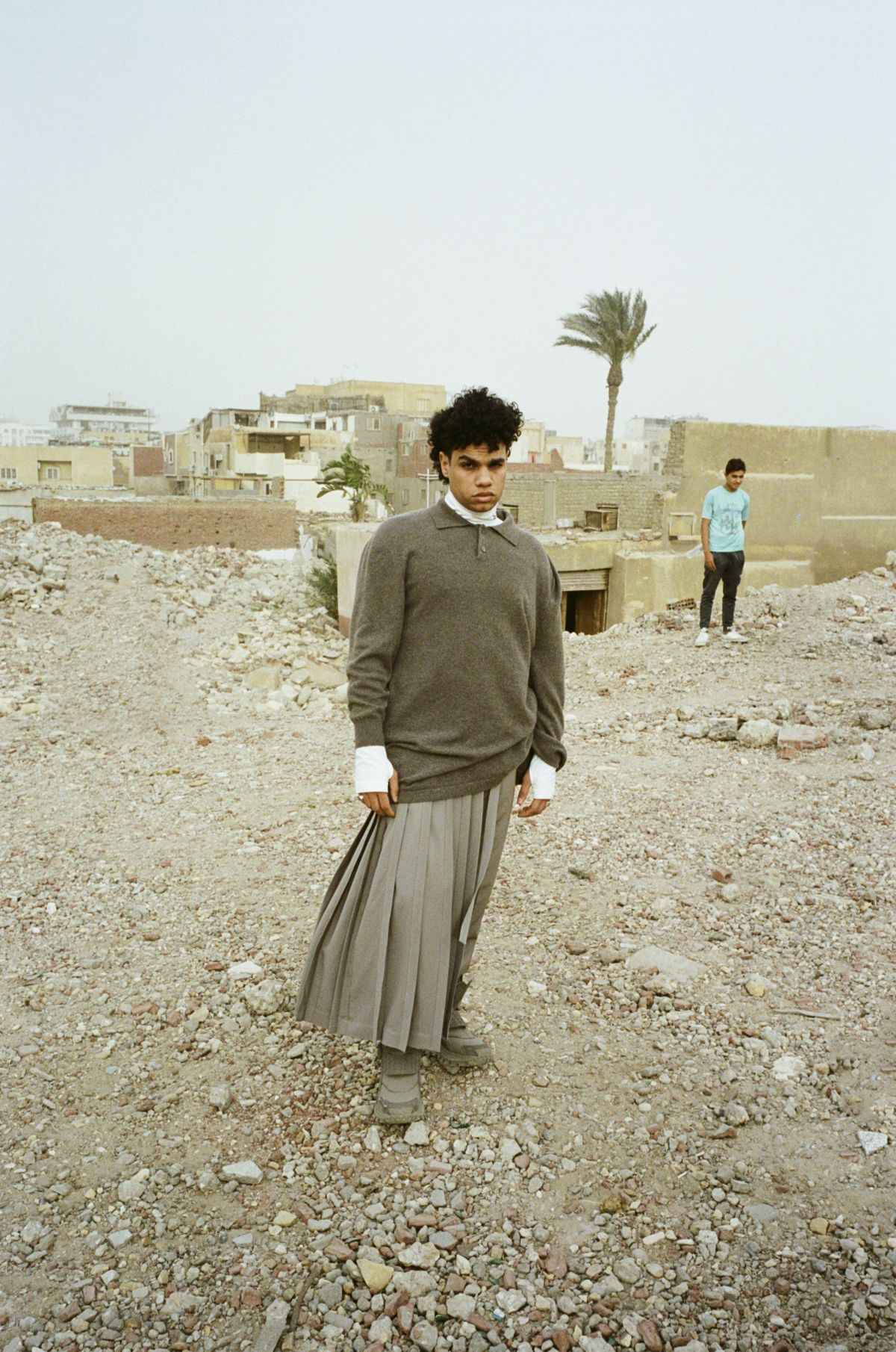
Fotografie di Teresa Ciocia
La Collezione Dior Men Pre-Fall 2023, presentata lo scorso dicembre sulla spianata delle Piramidi, proprio a Giza, sembra fatta apposta per lui. La tavolozza è quella del deserto, dal giorno alla notte, improvvisamente accesa dai tocchi di colore di un tramonto infuocato. Attraverso la stratificazione (pantaloni sovrapposti da teli plissé che mimano mezze gonne a pieghe, leggings che coprono le gambe che gli shorts corti lascerebbero scoperte e trench che si aprono sulla schiena per lasciare spazio a vaporosi teli a pieghe) la collezione fonde la tradizione – mantelle e pezzi di seta leggerissima, il papiro irrigidito e lavorato a paglia di Vienna che diventa una specie di armatura – al futurismo che emerge nelle calzature e nelle stampe spaziali che riproducono gli scatti dei telescopi Nasa. «Il mio interesse per l’antico Egitto è legato alle stelle e al cielo», aveva spiegato il direttore creativo Kim Jones, «ho questa fascinazione per il mondo antico e per gli evidenti parallelismi con quello di oggi; per quello che abbiamo ereditato da quel tempo e quello che stiamo ancora imparando dal passato». Sia nella collezione che nella sfilata c’è l’idea di essere «guidati dalle stelle», un concetto che, secondo lui, implica «una conversazione tra due mondi, del modo in cui il passato dà forma al futuro o di un’idea di futuro che proviene dal passato». In passerella avevano sfilato settantacinque look, come gli anni dalla fondazione del marchio, e “Cairo” era il nome di un abito disegnato dal fondatore nel 1947. Un cerchio perfetto che si chiude quando chiedo a Ziad qual è la parte che gli piace di più della sua città adottiva e lui risponde che è la zona di El Haram, l’area che circonda le piramidi, perché «mi fa sentire nel cuore del Cairo».
Quando cammina per la strada Ziad si muove come un re, è un portamento che non ha niente di presuntuoso ma ha più a che fare con un atteggiamento protettivo: più alto di tutti i suoi amici (che compaiono in varie parti della città dove lo fotografiamo), noto che spesso cammina tenendogli la mano sulla spalla. A un certo punto, mentre è in posa in mezzo alla strada, un gruppetto di ragazzini curiosi si avvicina e come se fosse la cosa più ovvia da fare, lui li invita nella foto. Non ci stupisce apprendere che uno dei suoi soprannomi è El Rays (come il suo album), che significa “il sindaco”. Sulla sua vita privata è riservato, nelle sue canzoni parla anche di amore e amicizia, ma il cuore è spezzato (come in uno dei suoi pochi pezzi non drill, la tenera “Wrangler Beda”) e pieno di rabbia. «La mia infanzia è stata bellissima», spiega, «fino a quando non è avvenuto un cambiamento improvviso; problemi familiari. Proprio come succede a tanti altri bambini».
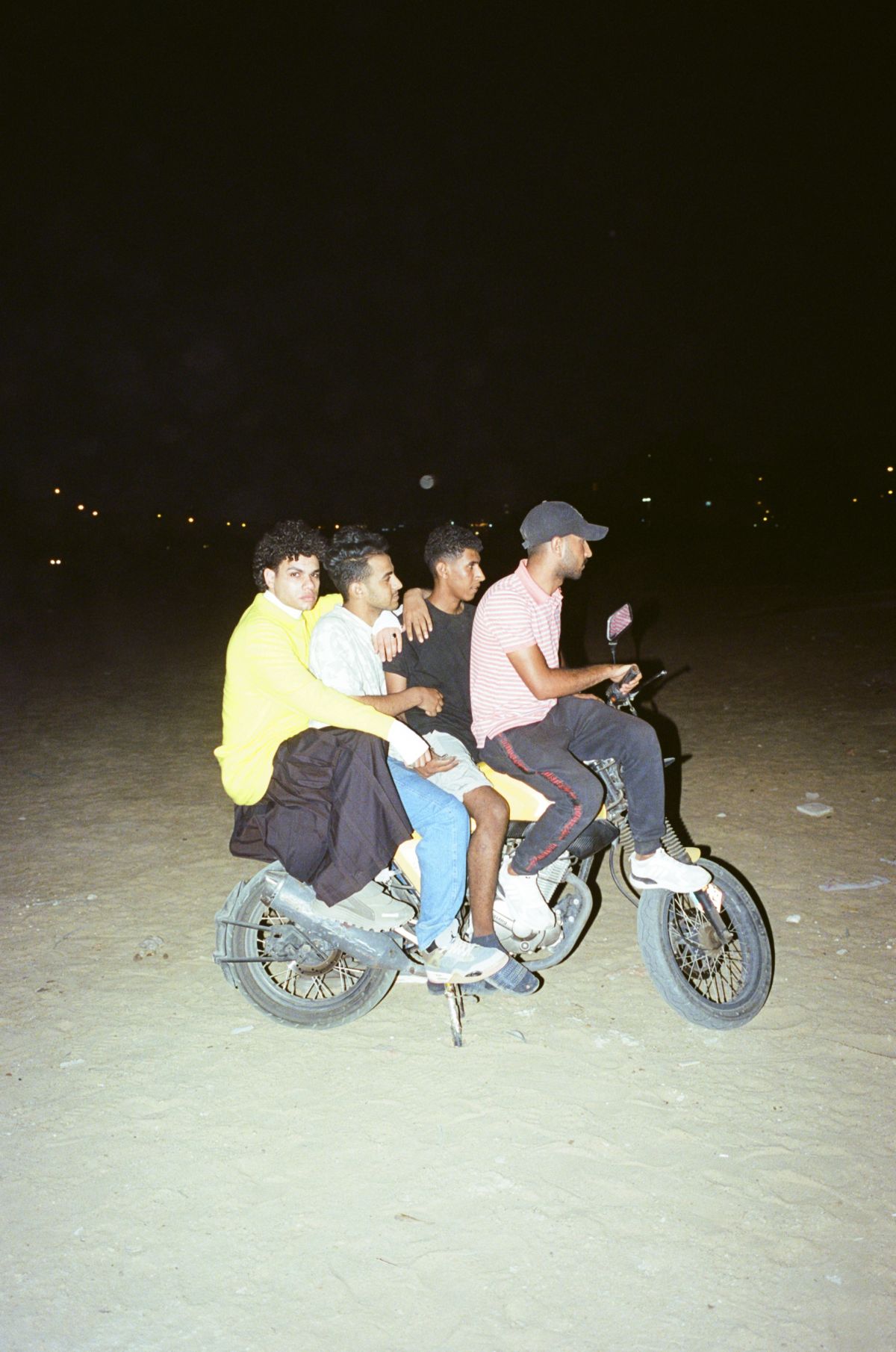
Racconta che ha iniziato a scrivere quando aveva dodici anni, più o meno l’età dei ragazzini della foto, e che ha sempre desiderato diventare una star, da quando guardava Mtv. La prima cosa che fa quando torniamo alla sede di Beatroot, reduce dagli scatti nel bel mezzo di una tempesta di sabbia, è buttarsi sul divano e guardare un paio di video: prima “Runaway” di Kanye West, poi “A$AP Forever” di A$AP Rocky. L’ultima foto la scattiamo su una moto parcheggiata lì fuori, insieme ai suoi amici: si rifiuta di mettersi in mezzo e ci spiega che nella cultura street stare al centro è un po’ da sfigati. Così si mette per ultimo, un posto che, ipotizziamo, è forse il posto dei fighi perché è il più pericoloso, o forse perché è l’unico in cui si può posare per bene. Del suo nuovo album, che uscirà più o meno nello stesso periodo dell’uscita in edicola di questo numero, ci anticipa solo il titolo: si chiamerà “Zaza el Wassem”.
Ziad Zaza indossa la collezione Dior Men Pre-Fall 2023, disegnata da Kim Jones, che aveva sfilato proprio a Giza lo scorso dicembre
Fotografie di Teresa Ciocia
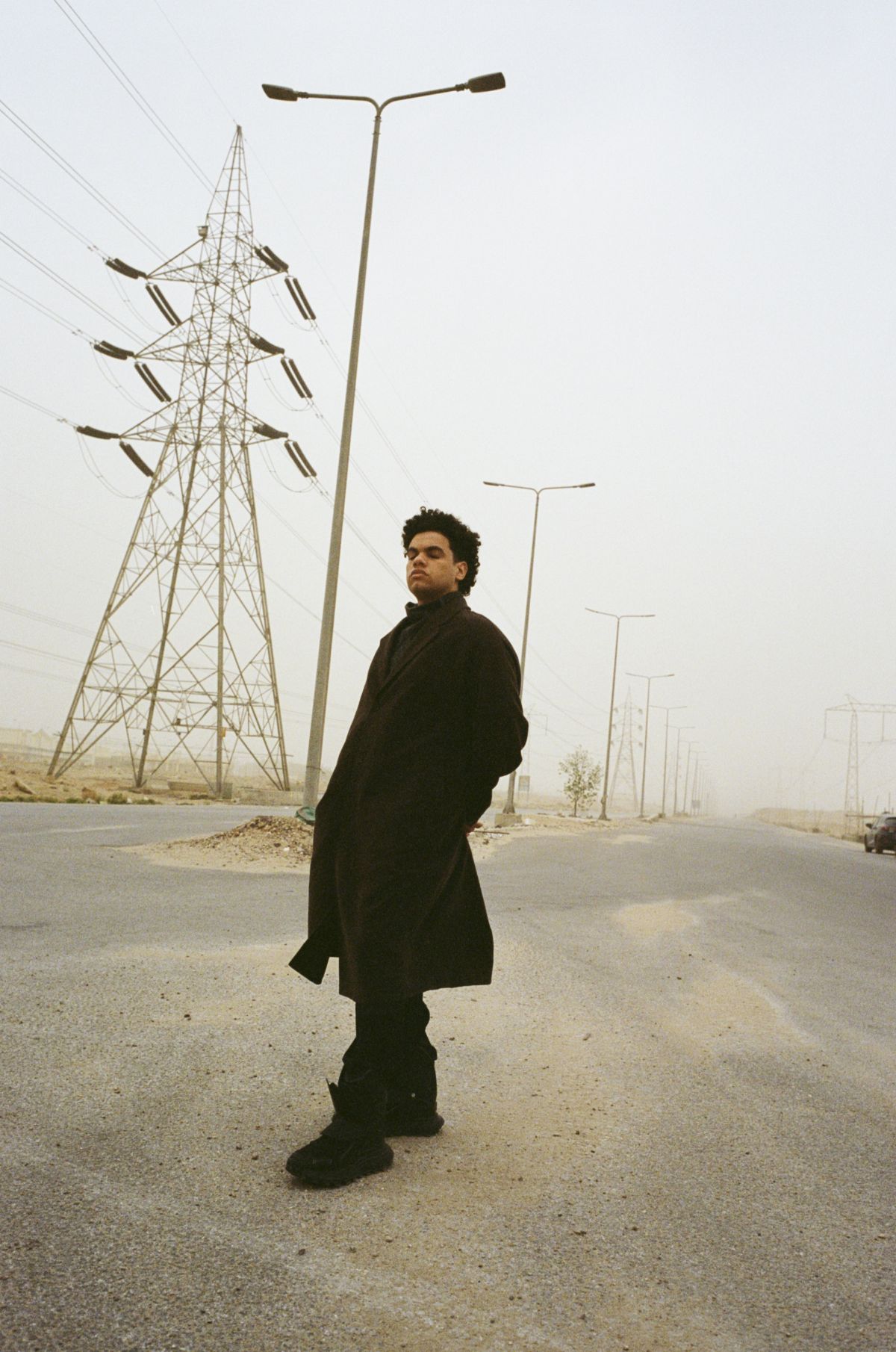
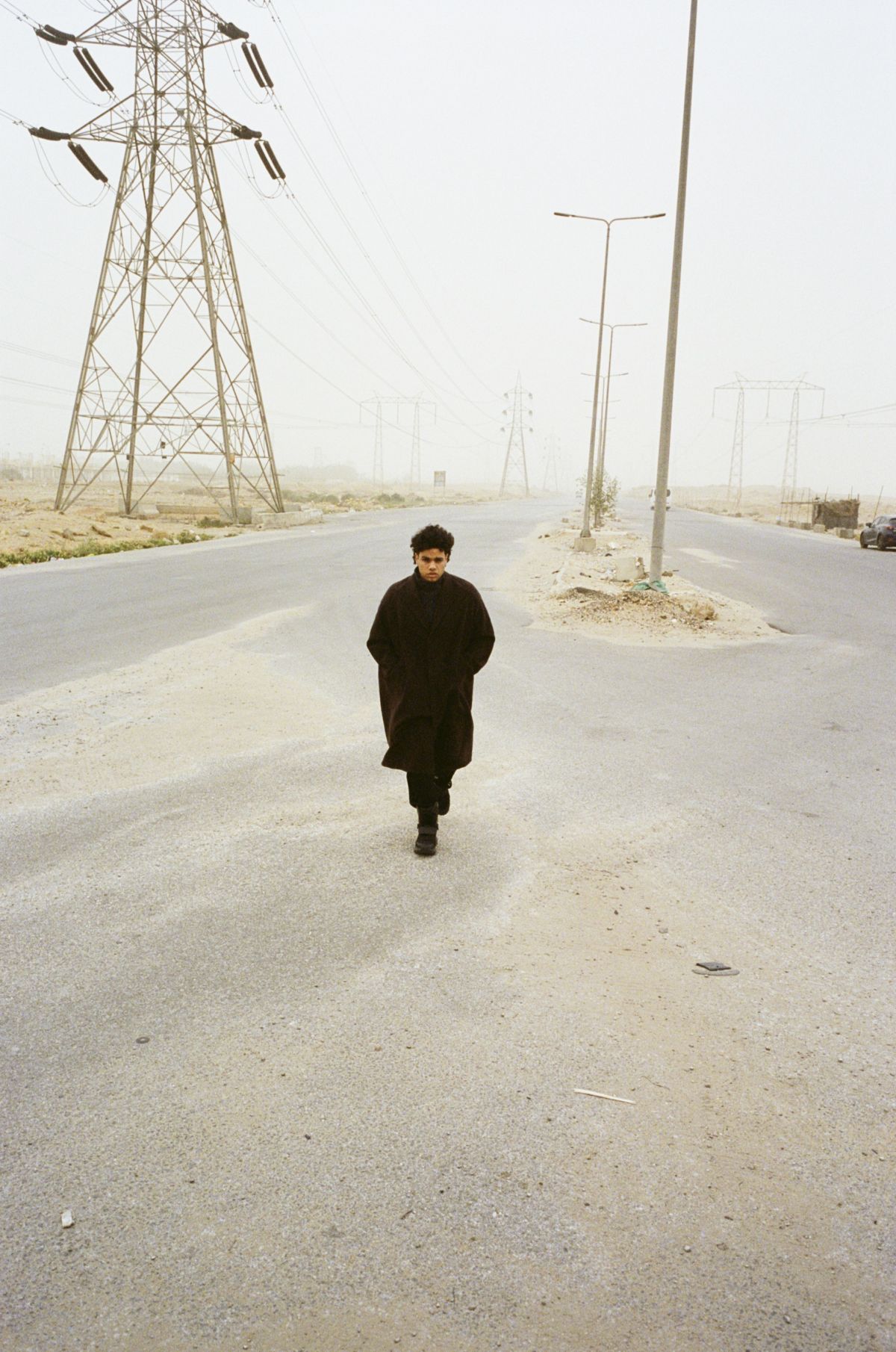
A day in the life of Ziad Zaza in Cairo
We spent a day on the streets of the Egyptian capital with the most interesting artist of his country’s drill scene. Zaza wears the Dior Men Pre-Fall 2023 collection, designed by Kim Jones, whose runway show took place in Giza last December.
Outside the airport, the sky is white, almost yellow, as if it were about to snow, but the temperature feels like it is more than thirty degrees. To reach the headquarters of the record label, Beatroot Records, in Giza, we cross the whole city. As soon as we leave, the driver, Yussef, puts the music on full blast: during the journey we search for several songs on Shazam, anxious to listen to them again once back in Milan, but the internet works poorly, and the only one we manage to find is by Hoda Bondok, pop star and actor with 1 million followers on Instagram, “Kan Lya Habayeb”. For the evening, Yussef chooses a different soundtrack: apparently pop and traditional music are reserved for daytime travel, when it gets dark he switches to trap. Among the songs, we immediately recognise those by Ziad Zaza, featured in our photographs. They are the most aggressive and also the most original, the most recognisable, because of his angry, drawling, theatrical, slightly and voluntarily off-beat way of singing – «almost as if drunk», one online review reads – and because of the production, a simple, minimalist, and therefore all the more powerful drill base, with samples reminiscent of the music of Arab TV programmes from the 1990s, a detail that adds a nostalgic flavour.
Omar Gawdat, co-founder and CEO of Beatroot Records (the others are Omar Safi, co-founder and CEO of the production company Cinerama and Nalan Al Sarraj, Head of Talent Management) talks about his pupil as a proud father. Ziad has many other fans: one of them is the author of a Scene Noise article titled “How Drill Is Taking Over Egypt’s Rap Scene”, which conclude his list of trap songs with a link to Ziad Zaza’s “Eznab”, from his 2022 album El Rays, and writes «It can be argued that the music produced within this subgenre is, at times, derivative, when key elements are used in a stereotypical or copy-and-paste sense. However, some artists have added an original twist, challenging the sound elements typically associated with drilling, such as Ziad Zaza in El Rays, where the instrumentation shows a more experimental use of samples. The album was produced by several collaborators, including 15, Lil Zoz, Moharram, Mahmoud El Sammad and Ismail Nosrat».
Ziad is twenty-three years old and has 100,000 followers on Instagram and 47,000 on TikTok. He grew up in El Fayoum, 100 kilometres from Cairo, and moved to the city a few years ago. After the album, he released a song that has generated something of a cult following, “Basha”, a term which, they explain, is a bit of the equivalent of our ‘boss’, once used to express respect and reverence, now used ironically, in street life. One only has to compare the video of “Basha” (directed by Mohsen ElSherif) to those of his colleagues on YouTube to realise that it is something truly new in the Cairo scene, an unexplored aesthetic, less street and more fashion. To understand what he is talking about, we rely on the video, in which a truly remarkable casting of characters seems to be plotting something, because translating Zaza’s songs with Google Translator is impossible, because of the slang. Ziad explains to me that the song is about being “the snitch” (the traitor, the spy), not only in the street but also in love or friendship relationships. For his looks, which are at least as remarkable as the casting, one has to thank Egyptian designers, Ahmed G and Kojak. He explains that the location of the video is the new buildings constructed by the government for the Nazlet El Semman area, a reconstruction that has forced residents to change their homes, «although the neighbourhood looks new and tidy, they are not happy and it is not their home».
In person, Ziad has none of the supercilious, awkward star attitude he flaunts in videos. He is polite, smiling, patient, watching videos on TikTok and YouTube as we drive him around the city in a bus full of Dior clothes. We try them on at Beatroot Records’ headquarters, he wears them as if they were his own, and when we take his first photos we are surprised by the confidence with which he poses: an attitude that confirms the passion for fashion that leaks out from the “Basha” video. «Fashion is another tool I like to express who I am and how I feel», he explains, «I’ve been into fashion since I was a kid, I always like to follow what’s new, what brands are doing and their fashion shows. But in the end it’s not so much about the brand name for me, it’s about how much it’s helping me to express and feel like myself in that moment».
The Dior Men Pre-Fall 2023 Collection, presented last December on the esplanade of the Pyramids, right in Giza, seems tailor-made for him. The palette is that of the desert, from day to night, suddenly lit by the touches of colour of a blazing sunset. Through layering (trousers overlaid with pleated drapes that mimic pleated half-skirts, leggings that cover legs that short shorts would leave uncovered, and trench coats that open at the back to make way for fluffy pleated drapes) the collection blends tradition – capes and pieces of ultra-lightweight silk, stiffened papyrus worked into Vienna straw that becomes a kind of armour – with futurism that emerges in the footwear and in the space prints that reproduce shots of NASA telescopes. «My interest in ancient Egypt is related to the stars and the sky», Creative Director Kim Jones explained, «I have this fascination with the ancient world and the obvious parallels with today; what we have inherited from that time and what we are still learning from the past».
In both the collection and the fashion show, there is the idea of being “guided by the stars”, a concept that, according to him, implies «a conversation between two worlds, the way the past shapes the future or an idea of the future coming from the past». Seventy-five looks paraded on the catwalk, like the years since the brand was founded, and “Cairo” was the name of a dress designed by the founder in 1947. A perfect hoop that comes full circle when I ask Ziad which part of his adopted city he likes best, and he replies that it is the El Haram area, the area surrounding the pyramids, because «it makes me feel like I am in the heart of Cairo».
When he walks down the street, Ziad moves like a king, it is a way of carrying himself that has nothing presumptuous about it but more to do with a protective attitude: taller than all his friends (who appear in various parts of the city where we photograph him), I notice that he often walks with his hand placed on his shoulder. At one point, while he is posing in the middle of the street, a small group of curious kids approaches and as if it was the obvious thing to do, he invites them into the picture. We are not surprised to learn that one of his nicknames is El Rays (like his album), meaning “the mayor”. On his private life he is rather reserved. In his songs he also talks about love and friendship but his heart is broken (as in one of his few non-driller pieces, the tender “Wrangler Beda”) and full of anger. «My childhood was beautiful», he explains, «until there was a sudden change; family problems. Just like for so many other children».
He says that he started writing when he was twelve, about the age of the kids in the picture, and that he always wanted to be a star, ever since he watched MTV. The first thing he does when we get back to Beatroot’s headquarters, back from shooting in the middle of a sandstorm, is throw himself on the couch and watch a couple of videos: first Kanye West’s “Runaway”, then A$AP Rocky’s “A$AP Forever”. The last photo is taken on a motorbike parked outside with his friends: he refuses to get in the way and explains that in street culture being in the middle is a bit lame. So he puts himself last, a place that, we speculate, is perhaps the coolest place because it is the most dangerous, or perhaps because it is the only place where one can pose properly. On his new album, which will be released around the same time as this issue hits the newsstands, he only reveals the title: it will be called “Zaza el Wassem”.
Ziad Zaza wore the Dior Men Pre-Fall 2023 collection, designed by Creative Director Kim Jones, presented last December on the esplanade of the Pyramids in Giza
Photography Teresa Ciocia


